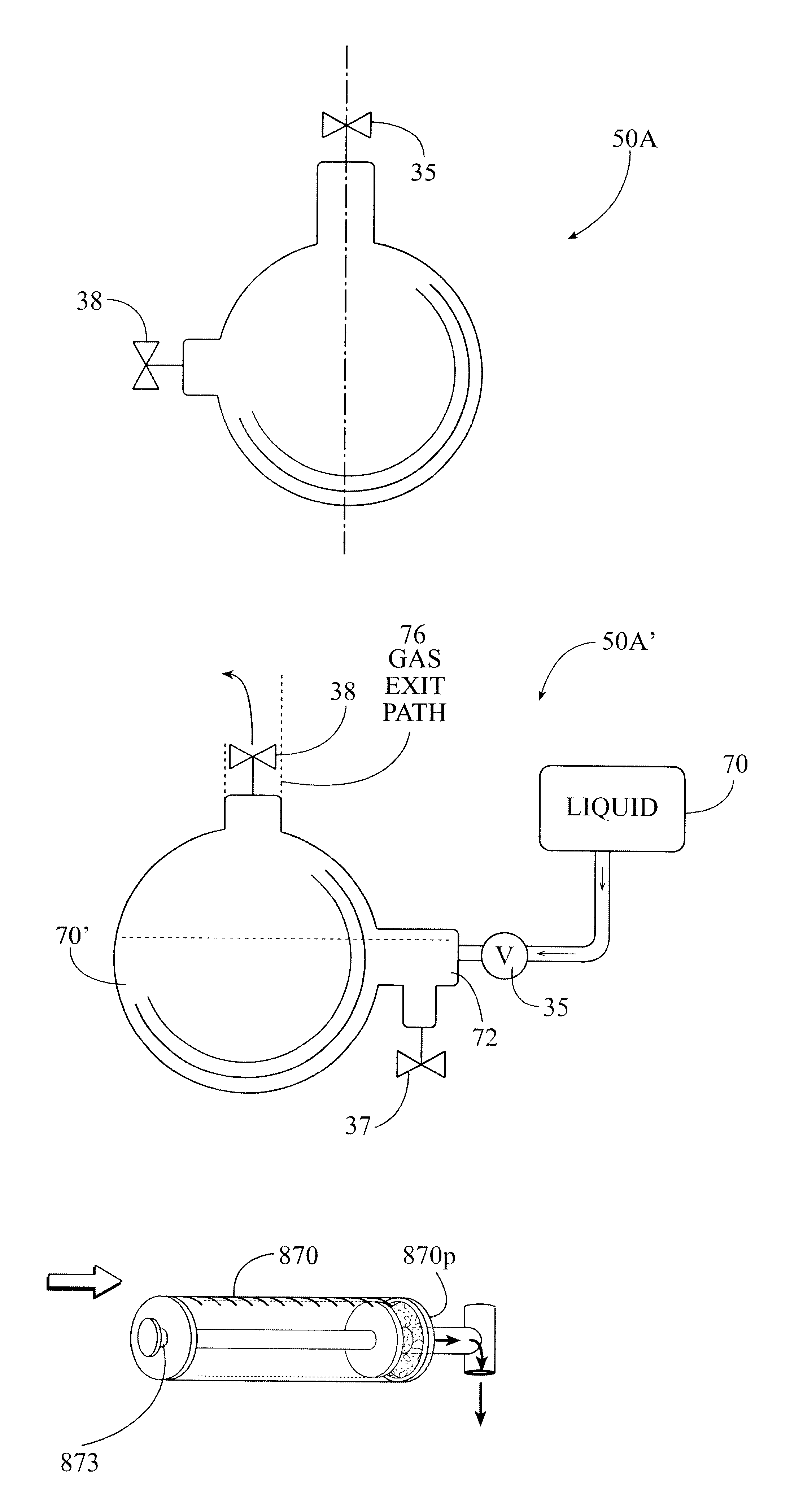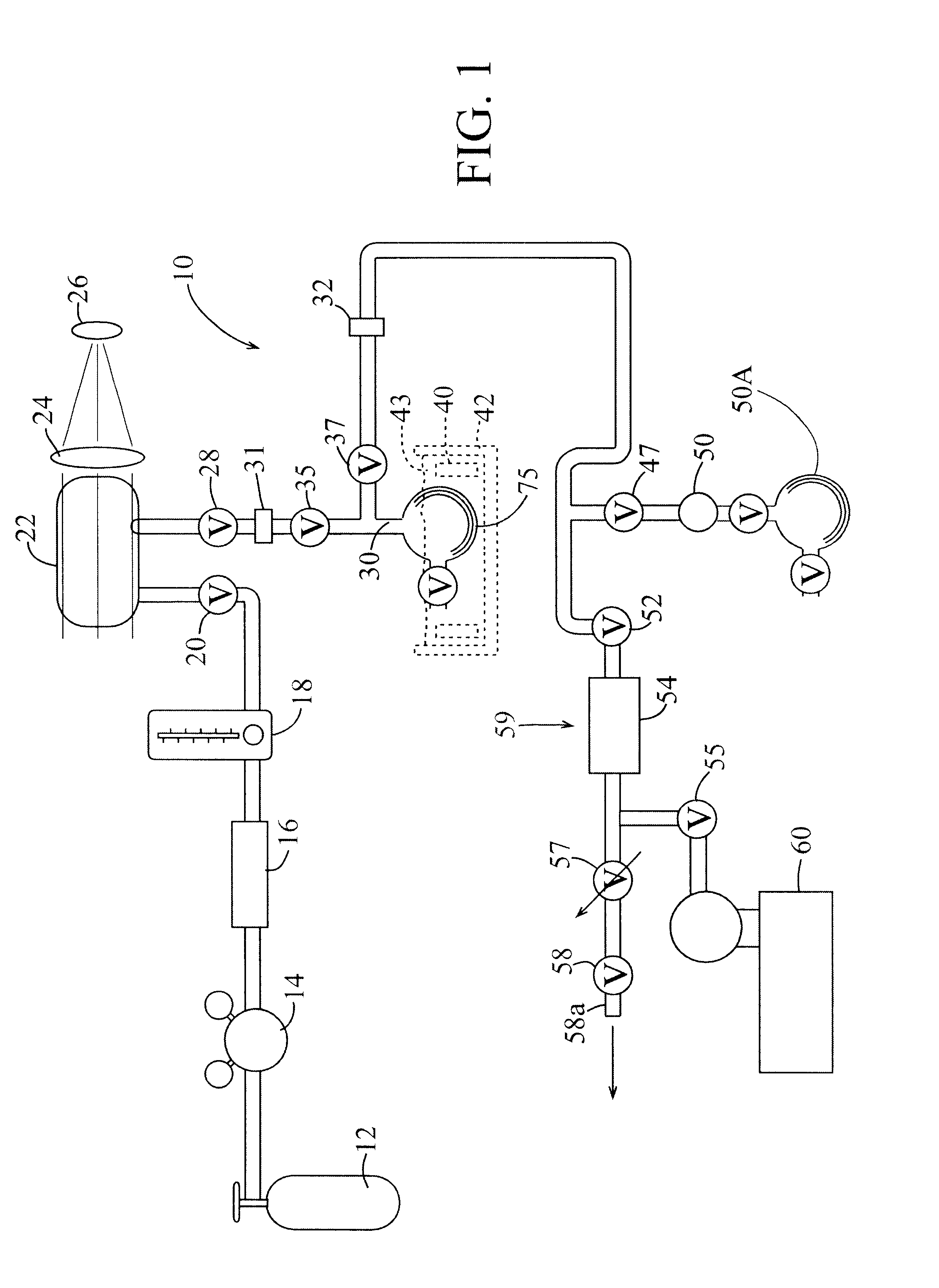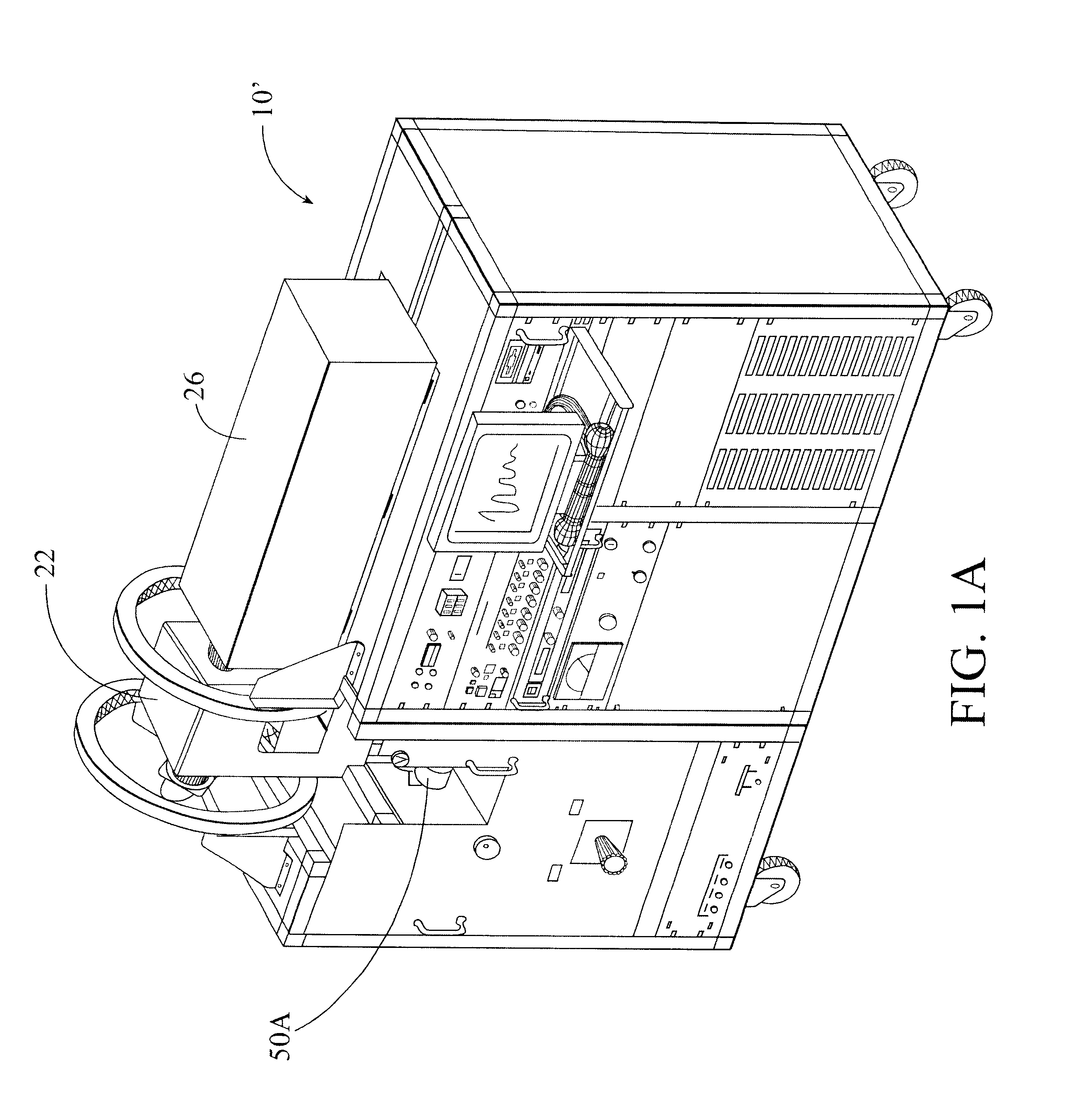Meted hyperpolarized noble gas dispensing methods and associated devices
a noble gas and hyperpolarized technology, applied in the direction of liquid transfer devices, container discharge methods, diagnostic recording/measuring, etc., can solve the problems of less than satisfactory images, rapid decay from the polarized state, and the hyperpolarized state of the gas can deteriorate or decay relatively quickly, so as to reduce the de-polarization of the gas attributed
- Summary
- Abstract
- Description
- Claims
- Application Information
AI Technical Summary
Benefits of technology
Problems solved by technology
Method used
Image
Examples
example
A suitable precision fluid measuring product gas tight syringe is available from the Hamilton Company located in Reno, Nev. This syringe can be modified by changing the fitting 870p and the plunger 873. That is, the magnetic metal fitting conventionally used on this syringe where the line connects to the body of the plunger was replaced with a plastic (polypropylene) fitting and the plunger was replaced with a plunger formed of polyethylene plastic.
T.sub.1 measurements were taken for the syringes holding only or (substantially pure or about 100%) .sup.3 He. For about a one liter quantity of .sup.3 He gas in the syringe held within a protective magnetic holding field of about 7 Gauss a T.sub.1 of about 3 hours was measured. For about 950 cc's (a similar quantity) of the substantially pure .sup.3 He not held in a protective holding field a T.sub.1 from about 10-17 minutes was obtained.
Additionally T.sub.1 measurements were taken for gas mixtures meted according to the present inventio...
PUM
 Login to View More
Login to View More Abstract
Description
Claims
Application Information
 Login to View More
Login to View More - R&D
- Intellectual Property
- Life Sciences
- Materials
- Tech Scout
- Unparalleled Data Quality
- Higher Quality Content
- 60% Fewer Hallucinations
Browse by: Latest US Patents, China's latest patents, Technical Efficacy Thesaurus, Application Domain, Technology Topic, Popular Technical Reports.
© 2025 PatSnap. All rights reserved.Legal|Privacy policy|Modern Slavery Act Transparency Statement|Sitemap|About US| Contact US: help@patsnap.com



